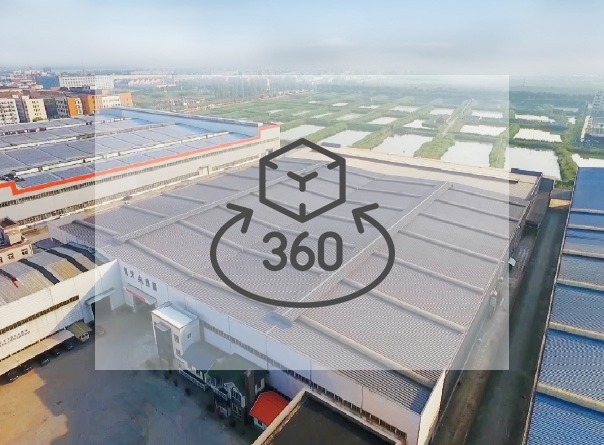Industry News
Three major development models of prefabricated housing
25 Apr, 2023
What is prefabricated housing?Prefabricated houses, or integrated houses, are houses built in an industrialized way, in which some or all of the components are prefabricated in a factory, then transported to the construction site and assembled by reliable connections.Prefabricated houses are divided into three main development modes.
Prefabricated reinforced concrete structure, prefabricated light steel structure, and prefabricated container house.

Development mode I: Prefabricated concrete structure house
PC (Prefabricated Concrete Structure) is a concrete structure formed by assembling and connecting prefabricated concrete components as the main components, combined with partial cast-in-place. PC housing has many advantages, such as high energy efficiency, green environment protection, cost reduction, and housing function and performance.
Development mode II: Prefabricated steel houses
Cold-formed thin-walled aluminum-zinc-plated light steel structure system is the pioneer of green building. With its significant advantages of energy saving and environmental protection, good seismic performance and fast construction, it is set by the Ministry of Housing and Construction as the development direction of low-density housing in China.
This system is a new system developed in the United States in the 1950s to replace wood structures. The system has been widely used in the United States, Canada, Japan and Australia, and the steel structure housing construction in Australia accounts for about 50% of all new housing.


Take its intelligent and high precision, high strength, lightweight and more material-saving, super anti-corrosion, economic and fast, high rate of housing, excellent seismic performance and other characteristics are widely used in the field of self-built housing, landscape architecture, public buildings after the disaster.


Development mode III: prefabricated container modular housing
The leisure club and tourist hotel created by using container house, etc. The roof panel material is made of external FRP + steel skeleton + internal FRP, equipped with water, electricity lines and ventilation systems such as doors and windows, meeting rooms, accommodation rooms, restrooms, etc. The functional layout and ease of use and comfort are high, reflecting a distinctive free and creative style.
Some scholars asked the government to introduce supporting policies for the container room under the strong appeal, the momentum of the development of the container room more in the intentional expansion. In fact, on the other side, the container room also has more traditional building does not have the advantages and role. For example, in the use as hotels, resorts, vacation villas, motels, restrooms, cafes, convenience stores, rest kiosks, etc..


Compared with brick and mortar houses, the construction water consumption is 1/30 of brick and mortar houses, concrete loss is 1/50; reduce construction waste and decoration waste by about 99%, reduce the use of concrete by about 9800 cubic meters, reduce construction water consumption by about 1450 tons, reduce construction waste by about 495 tons; the recycling rate of building materials is 70% higher than traditional buildings, and the construction period is shortened by about 50%, compared with brick and mortar houses, the overall energy saving is about 50%.
In addition, the container room using 50mm rock wool board, than the traditional brick structure housing using 250mm brick walls, insulation performance is still 2 times higher.
However, in the domestic, the real situation of the development of container housing, the market is active first, the policy slowly tend to back. Compared to the container room "developers" of the market expansion of the worry, the relevant policies are not in place, it is more anxious. In foreign countries like a fish in the water to build a container house, Miguel square cabin, in China, quite perceptive to realize that "the good seeds, but also to find the right soil."


As a new housing model, container housing and mobile homes in the domestic housing market, more like an awkward intruder. "The current Chinese market, the use of relatively mature mainly concentrated in some special industries, such as weather monitoring, polar expeditions, oil exploration, military facilities and other field logistics system." MIG square cabin general manager Ma Enbo said.
The container room to the identity of housing for mass use and construction, there are few possibilities. "This is mainly limited by the issue of land use rights." "There is no land use rights, maybe built today, tomorrow will be lifted."
With the convenience and mobility of container housing and combination housing, it seems to be more suitable for tourism, a market with an unusually high flow of people. Because if you want to build a scenic area of the least destructive to the environment, but also the most creative features, the most flexible building, then the container room in the appropriate.

In the United Kingdom, Japan, France and many other cities, containers and combined housing is widely used to manufacture homes, museums, boutiques, office buildings, pavilions, tourist villas, motels and all kinds of creative buildings, not only in the private use is quite common, the government also strongly support and actively involved in the Dutch capital Amsterdam is the world's most container housing city.
In the United States, the major mobile home manufacturers, each year for the market demand for a number of mobile homes, and often in short supply. These precedents, so that more people see the feasibility of such construction methods. In soaring housing prices, building pollution is becoming increasingly serious in China, the emergence of container housing or will create new possibilities for improving the living environment, creating value for people's new green living model.

Share article







 English
English Español
Español 中文简体
中文简体 Français
Français عربى
عربى










